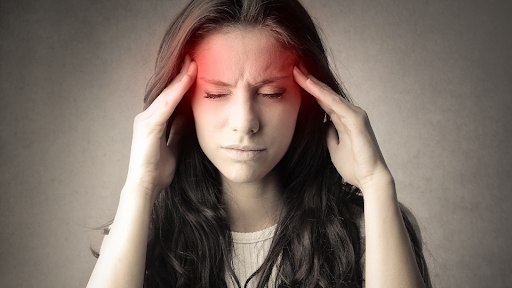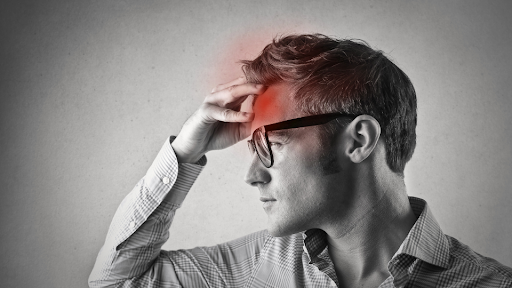Does Gabapentin Help with Sciatica?
Sciatica can cause sharp pain that shoots down your leg, making simple tasks hard. Many people wonder if gabapentin, a common medication, can ease this pain. This article [...]
Read More
Medically reviewed by Abhijit Bhattacharyya | MD, PhD, MBA, Tufts University School of Medicine - Miami, Florida on June 20th, 2025.
Headaches are a common ailment experienced by individuals of all ages. They can vary significantly in terms of intensity, duration, and underlying causes. Understanding the different types of headaches is crucial for effective management and treatment. This article will explore various headache types, their symptoms, and potential remedies, accompanied by a comprehensive chart for easy reference.
 Types of Headaches
Types of HeadachesHeadaches can be broadly categorized into two main types: primary and secondary headaches. Each category encompasses several specific types, each with its own characteristics and treatment options. Understanding these distinctions is crucial for effective management and relief.
Primary headaches are not caused by an underlying medical condition. Instead, they are standalone disorders. The most common types of primary headaches include:
Tension Headaches: Often described as a tight band around the head, tension headaches can be triggered by stress, anxiety, or poor posture. They are the most prevalent type of headache, affecting individuals of all ages. Lifestyle changes, such as regular exercise, adequate hydration, and practicing relaxation techniques, can significantly reduce the frequency and intensity of these headaches.
Migraine: Characterized by intense, throbbing pain, migraines are often accompanied by nausea, vomiting, and sensitivity to light and sound. They can last from a few hours to several days and may be preceded by an aura, which can include visual disturbances or sensory changes. Identifying and avoiding specific triggers, such as certain foods or hormonal changes, can be an essential part of managing migraines.
Cluster Headaches: These occur in cyclical patterns or clusters, causing severe pain, usually around one eye. They can last from 15 minutes to several hours and are often described as one of the most painful types of headaches. Although the exact cause is unknown, cluster headaches are more common in men and can be triggered by alcohol consumption or changes in sleep patterns.
Secondary headaches are symptoms of an underlying condition, such as an injury or illness. They can be more serious and require medical attention. Common types include:
Sinus Headaches: Resulting from sinus infections or inflammation, these headaches are often accompanied by facial pain and pressure. They can be exacerbated by changes in weather or exposure to allergens. Treatment typically involves addressing the sinus issue, which may include decongestants or antibiotics if a bacterial infection is present.
Rebound Headaches: Caused by overuse of pain medications, these headaches can occur when the medication wears off. They often lead to a cycle of increased medication use, creating a challenging situation for sufferers. It is essential for individuals experiencing rebound headaches to consult with a healthcare provider to develop a strategy for tapering off medication safely.
Cervicogenic Headaches: Originating from issues in the cervical spine, these headaches can cause pain in the back of the head and neck. They may be associated with neck injuries, arthritis, or herniated discs. Treatment often includes physical therapy, chiropractic adjustments, and pain management strategies to address the underlying cervical issues.
 Recognizing the symptoms associated with each type of headache is essential for proper diagnosis and treatment. Here’s a closer look at the symptoms linked to primary and secondary headaches.
Recognizing the symptoms associated with each type of headache is essential for proper diagnosis and treatment. Here’s a closer look at the symptoms linked to primary and secondary headaches.
Each type of primary headache has distinct symptoms that can help differentiate them:
Tension Headache: Dull, aching head pain; tightness or pressure across the forehead; tenderness in the scalp, neck, and shoulder muscles.
Migraine: Intense, throbbing pain, usually on one side; nausea; vomiting; sensitivity to light and sound; aura (visual disturbances).
Cluster Headache: Severe, burning pain around one eye; tearing or redness in the eye; nasal congestion; restlessness during an attack.
Secondary headaches can present with a variety of symptoms, often indicating a more serious condition:
Sinus Headaches: Pain and pressure in the forehead, cheeks, and around the eyes; nasal congestion; fever.
Rebound Headaches: Daily or near-daily headaches; worsening pain with medication use; relief after taking pain relievers.
Cervicogenic Headaches: Pain that starts in the neck and radiates to the head; limited neck mobility; tenderness in the neck and shoulder region.
Understanding the nuances of these symptoms can significantly aid in identifying the underlying causes of headaches. For instance, tension headaches are often exacerbated by stress, poor posture, or prolonged periods of screen time, leading to muscle tension and discomfort.
On the other hand, migraines may be triggered by specific foods, hormonal changes, or environmental factors, making it crucial for individuals to keep a headache diary to track potential triggers and patterns.
Additionally, cluster headaches are known for their cyclical nature, often occurring in "clusters" over weeks or months, followed by periods of remission. This unique pattern can make them particularly challenging to manage, as the intense pain can lead to significant lifestyle disruptions. Recognizing these patterns not only helps in seeking appropriate treatment but also in understanding the impact of headaches on daily life and mental well-being.
The following chart summarizes the key characteristics of different types of headaches, making it easier to identify and understand them at a glance.
Understanding the nuances of each type can empower individuals to seek appropriate treatment and make informed lifestyle choices that may help mitigate the frequency and intensity of these headaches.
Type of Headache:
Tension Headache
Causes: Stress, anxiety, and poor posture
Duration: 30 minutes to several days
Treatment Options: Over-the-counter pain relievers, relaxation techniques
Migraine
Causes: Genetics, hormonal changes, and environmental factors
Duration: 4 to 72 hours
Treatment Options: Prescription medications, lifestyle changes
Cluster Headache
Causes: Unknown, potential genetic factors
Duration: 15 minutes to 3 hours
Treatment Options: Oxygen therapy, prescription medications
Sinus Headache
Causes: Sinus infection, allergies
Duration: Days, as long as the sinus issue persists
Treatment Options: Decongestants, nasal sprays
Rebound Headache
Causes: Overuse of pain medications
Duration: Can be chronic
Treatment Options: Gradual withdrawal of pain medication
Cervicogenic Headache
Causes: Cervical spine issues
Duration: Varies
Treatment Options: Physical therapy, pain management
Headaches can significantly impact daily life, affecting productivity and overall well-being. Tension headaches, for example, are often described as a tight band around the head, typically triggered by stress or muscle tension. Incorporating regular breaks, stretching, and mindfulness practices can be beneficial in reducing the frequency of these headaches.
Conversely, migraines can be debilitating, often accompanied by symptoms such as nausea and sensitivity to light and sound. Identifying personal triggers—ranging from certain foods to sleep patterns—can be crucial in managing this condition effectively.
Cluster headaches, while less common, are known for their intense pain and cyclical nature, often occurring in clusters over weeks or months. These headaches can disrupt sleep and daily activities, making timely intervention essential. Treatments such as oxygen therapy have shown promise in alleviating symptoms quickly.
On the other hand, sinus headaches are often linked to underlying sinus issues, and addressing these root causes through medical treatment or lifestyle adjustments can lead to significant relief.
Understanding the specific characteristics and treatments for each type of headache can empower individuals to take proactive steps in managing their health.
Proper diagnosis is vital for effective treatment. Healthcare professionals typically rely on a combination of patient history, symptom description, and physical examinations. In some cases, additional tests may be necessary.
During an initial consultation, a healthcare provider will often ask about:
The frequency and duration of headaches.
Associated symptoms such as nausea or sensitivity to light.
Family history of headaches or migraines.
Any recent changes in lifestyle or medication use?
A physical examination may include:
Checking for signs of neurological issues.
Assessing neck and shoulder tension.
Evaluating the sinuses for signs of infection.
If necessary, healthcare providers may recommend diagnostic tests such as:
CT or MRI Scans: To rule out structural issues in the brain.
Blood Tests: To identify underlying health conditions.
Sinus X-rays: To check for sinus infections.
Treatment for headaches varies based on the type and severity. Options can range from lifestyle changes to medical interventions.
In many cases, simple lifestyle modifications can significantly reduce headache frequency and intensity:
Hydration: Staying well-hydrated can prevent dehydration-related headaches.
Regular Sleep Patterns: Maintaining a consistent sleep schedule can help regulate headaches.
Stress Management: Techniques such as yoga, meditation, or deep breathing can alleviate tension headaches.
Many individuals find relief from headaches through over-the-counter medications, including:
Ibuprofen
Aspirin
Acetaminophen
For more severe headaches, especially migraines, healthcare providers may prescribe medications such as:
Triptans: Specifically designed to treat migraines.
Preventive Medications: Such as beta-blockers or antidepressants for chronic headaches.
Botox Injections: Approved for chronic migraine treatment.
In addition to conventional treatments, many individuals explore alternative therapies to manage headaches. These can be beneficial, especially for those who prefer non-pharmaceutical approaches.
Acupuncture involves inserting thin needles into specific points on the body. Some studies suggest it can reduce the frequency and intensity of headaches, particularly migraines.
Chiropractors focus on spinal adjustments, which can relieve tension and improve overall alignment. This approach may be particularly effective for cervicogenic headaches.
Some individuals find relief through herbal supplements, such as:
Feverfew: Often used to prevent migraines.
Butterbur: May help reduce headache frequency.
While most headaches can be managed at home, certain symptoms warrant immediate medical attention. These include:
Sudden, severe headache (often referred to as a "thunderclap" headache).
Headaches accompanied by confusion, seizures, or loss of consciousness.
Headaches following a head injury.
Persistent headaches that worsen over time.
In emergency situations, such as headaches accompanied by neurological symptoms or sudden changes in vision, immediate medical evaluation is critical. These could indicate serious conditions such as strokes or aneurysms.
Preventing headaches can significantly improve quality of life. Here are some effective strategies to consider:
Keeping a headache diary can help identify specific triggers, such as:
Dietary choices (e.g., caffeine, alcohol).
Environmental factors (e.g., bright lights, strong smells).
Emotional stressors.
Engaging in regular physical activity can help reduce stress and tension, both of which are common headache triggers. Aim for at least 30 minutes of moderate exercise most days of the week.
Practicing mindfulness, meditation, or yoga can enhance relaxation and reduce stress levels, potentially decreasing headache occurrences. These techniques promote overall well-being and can be incorporated into daily routines.
Understanding the different types of headaches is essential for effective management and treatment. By recognizing symptoms, identifying triggers, and exploring various treatment options, individuals can take proactive steps towards alleviating headache pain. Whether through lifestyle changes, medications, or alternative therapies, effective strategies are available to help manage headaches and improve quality of life.
Discover the key to better health by understanding the different types of headaches and their causes. From migraines to tension or cluster headaches, identifying the root of your discomfort is the first step toward effective relief. Talk to Doctronic, your #1 AI Doctor Now, for free.
Sciatica can cause sharp pain that shoots down your leg, making simple tasks hard. Many people wonder if gabapentin, a common medication, can ease this pain. This article [...]
Read MoreBack pain is one of the most common health complaints, affecting millions of people worldwide. If you have back pain, you might have heard about gabapentin as a possible [...]
Read MoreIf you take gabapentin, you might wonder if it will show up on a drug test. This question matters for many people, whether it’s for work, sports, or legal reasons. Gabapentin [...]
Read More